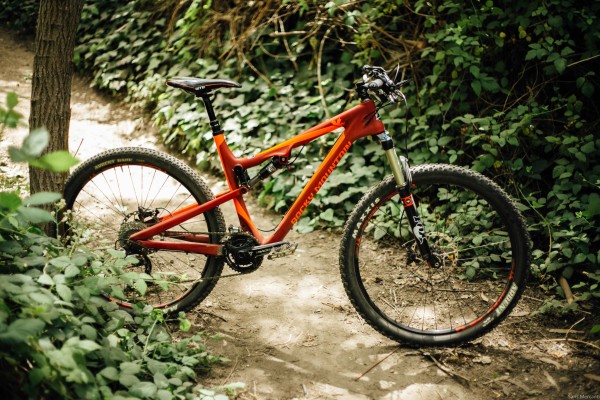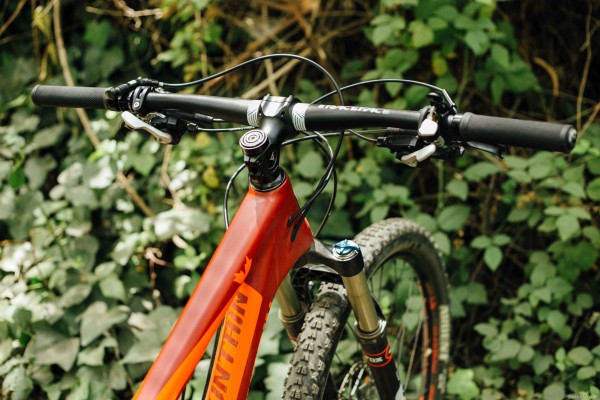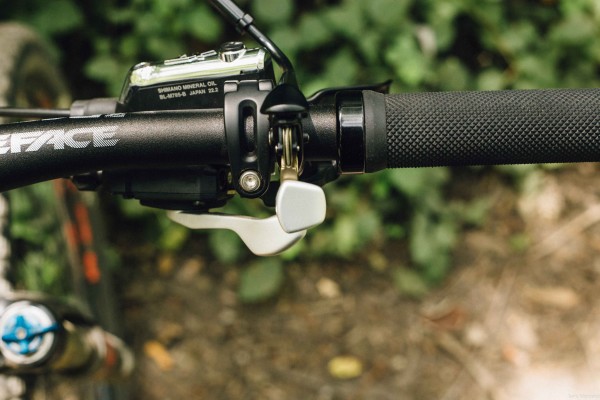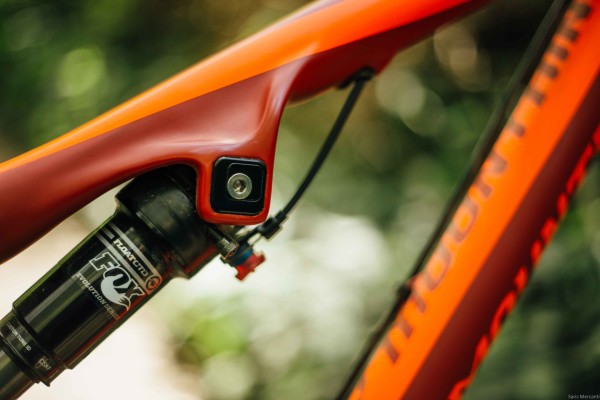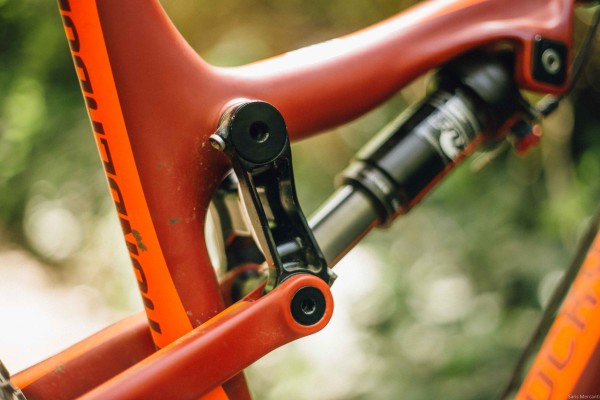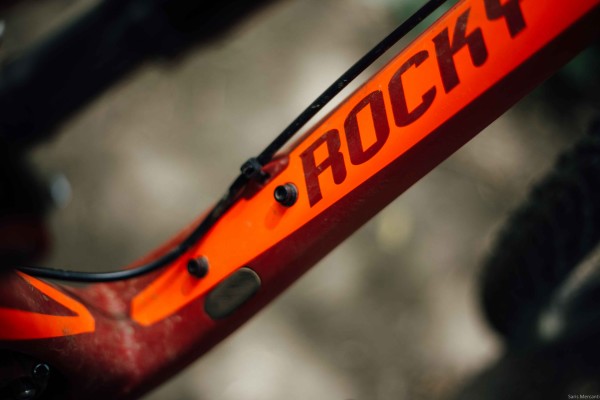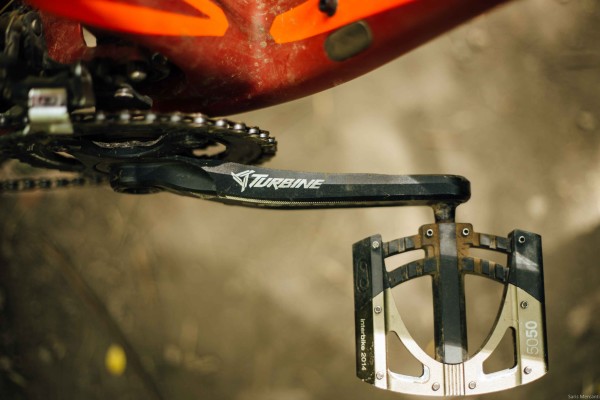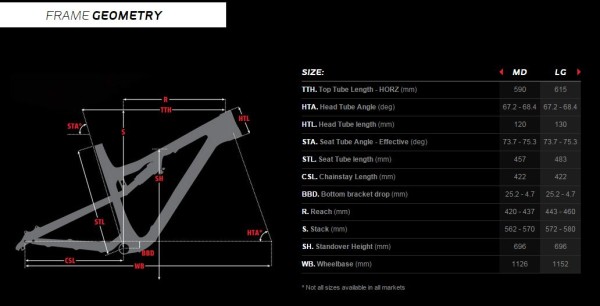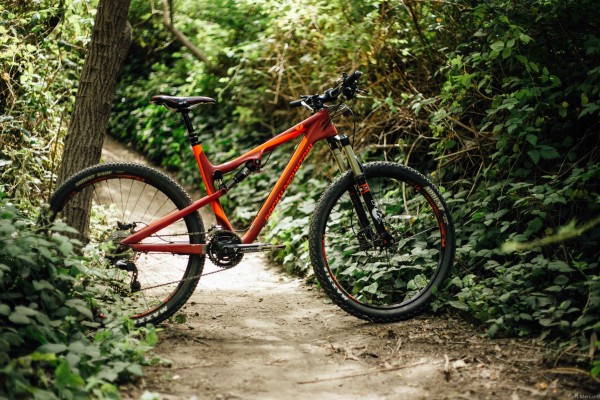A few years ago when 29ers where still as widely misunderstood as fat bikes, there was a trend of building up mini DH bikes out of four inch travel slopestyle bikes. Those bikes were (and are) about the most the fun you could have on a trail, but they were terrible for racking up miles.
Of course, this is the year 2015. My next door neighbor drives an electric car, mountain bikes cost more than your average bathroom remodel, and manufacturers are finally making little bikes that rip both uphill and down.
With a 120mm of travel front and rear, and 27.5″ wheels, the Rocky Mountain Thunderbolt is marketed as an “XC Trail” bike. A mountain biker’s mountain bike, if you will. Our test bike, the 770 MSL, retails for an MSRP of $5,499, which places it squarely between the Carhartt and Gucci camps.
Up front is a matched RaceFace Turbine cockpit. Bars are of the 740mm aluminum variety across all the sizes, but stem length varies between 60-80m….And yes, that is a lot of cables.
The various levers control the front and rear shifters, dropper post, and shock. Considering all that, everything is actually very neatly routed.
That said, things do feel a little crowded. For example, in the stock configuration, the lockout lever blocks the shifter paddle. It’s a minor inconvenience and one that can be remedied by shuffling the controls.
At the center of the Thunderbolt is the Ride 9 system. This set of dual counter rotating chips allows you to adjust the suspension to work better for lighter or heavier riders (linear or more progressive), and adjust the geometry to be slacker or more upright (aggressive versus efficient).
It’s a system Rocky uses on several different models and we’ve always found it be simple to use and creak free.
A few years ago, the company switched from bearings to bushings on most of their full suspension models, to help reduce weight and improve stiffness. We had a Altitude 790 MSL for long term review and didn’t experience any reliability issues, although we did have to regularly disassemble and clean the pivots to squelch the occasional creak. To remedy that issue, and simplify mechanics lives, the Thunderbolt now features grease ports. High Five!
The water bottle contingent will be pleased to see proper mounts on the inside (and underside) of the front triangle.
All complete versions of the Thunderbolt (both the carbon and aluminum models) are currently spec’d with two or three by drive trains. The only exception is the BC edition, which retails for $6,399, and has a 1x drivetrain, a 130mm fork, and wider bars.
All versions of the bike are available in five different sizes -XS-XL, and share an extremely low standover height, and compact chain stays.
On The Trail:

The marketing kit sets the bar very high for the little Rocky. What we know so far is that it’s light and playful. In the stock setting, the geometry is middle of the road for a 120mm travel trail bike, but hopefully the adjustability will deliver a ride that suits the needs of a variety of test riders. My personal preference is for a slacker more progressive ride, so I’ll be experimenting with that end of the spectrum, before handing the Thunderbolt to our token Strava Assasin.
The bounty of cockpit controls is still overwhelming, but as I’ve become accustomed to the remote shock lever, it’s something I wish more bikes came with. The Rocky’s suspension is efficient when climbing and offers excellent traction, but it’s active during out of the saddle exertions. The three position (climb, trail, descent) lever does an excellent job of quelling pedal feedback and each mode has a distinct character – climb mode is sports car stiff, while descent mode is Cadillac plush.
After the first few rides, the only thing I can complain about is chain slap, which is a simple fix. Once we have the opportunity to get this bike dirty and play with more settings, we’ll report back with long term impressions.
